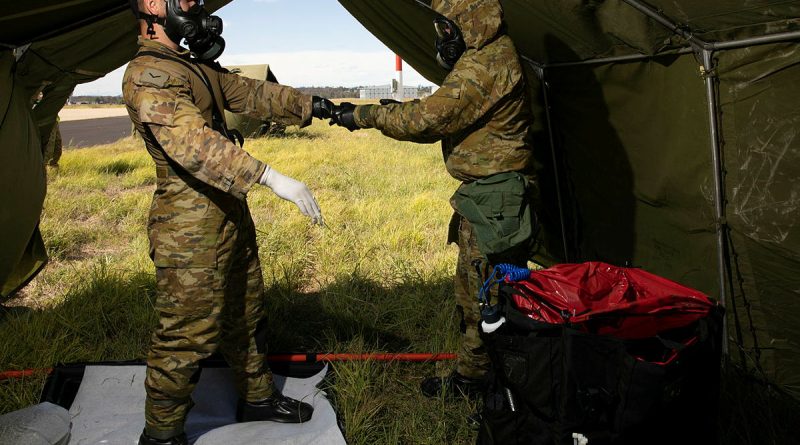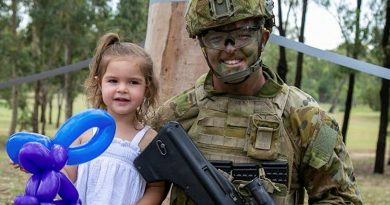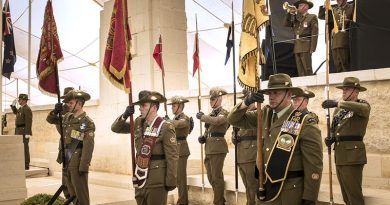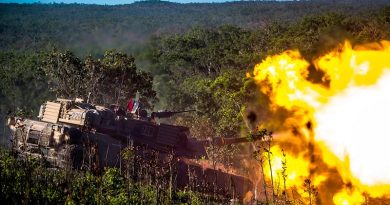Training to survive toxic shocks

RAAF’s Combat Support Group aviators took training to the airfield in November, to continue development of their chemical, biological, radiological and nuclear defence capability during Exercise Toxic Gauntlet.
CAPTION: Combat Support Group aviators assisting role players during a decontamination scenario during Exercise Toxic Gauntlet. Story by Flying Officer Greg Hinks. Photo by Corporal Brett Sherriff.
The training was conducted over two sites at RAAF Base Amberley, with role players simulating a chemical attack then moving to a decontamination area to be processed.
Aviators were given a ‘survive surprise’ capability by completing either the basic course or conversion training onto the new Project Land 2110 equipment.
This enabled participants to wear and operate protective equipment and survive a chemical, biological, radiological and nuclear attack.
The exercise then escalated to build on enhanced and specialist skills in survey, air movements, explosive ordnance demolition and decontamination.
Participants were put through a four-step decontamination simulation, in which role players were exposed to a chemical before stepping into a decontamination zone and being sprayed down and decontaminated.

CAPTION: A Combat Support Group aviator using a Lightweight Chemical Detector during Exercise Toxic Gauntlet. Photo by Corporal Brett Sherriff.
Aircraftman Sam Schmidt, from 382 Squadron, was on the decontamination team and said he enjoyed being part of the exercise and providing feedback for the program to evolve.
“It’s great to be part of an exercise where I can help with the development of the standard operating procedures and processes,” Aircraftman Sam Schmidt said.
“This training makes me more confident moving into areas that would be hazardous to someone without protective equipment and gives us the ability to take people out of a chemical, biological, radiological and nuclear situation and treat them safely.”
Squadron Leader Troy Myers, Exercise Officer in Charge from Headquarters Combat Support Group Capability Development, was impressed with the level of skill the members of Combat Support Group showed.
”The training was important for Defence’s ability to ‘survive to manoeuvre’ in a chemical, biological, radiological and nuclear defence environment,” Squadron Leader Myers said.
“The exercise has been successful, with lessons learnt that everyone has adapted to, this training takes our aviators to the next level with an enhanced skill set of decontamination and survey skills.”
.
.

.
.





